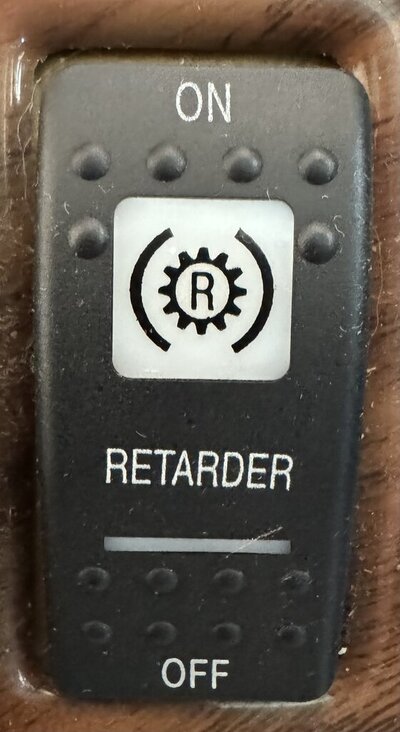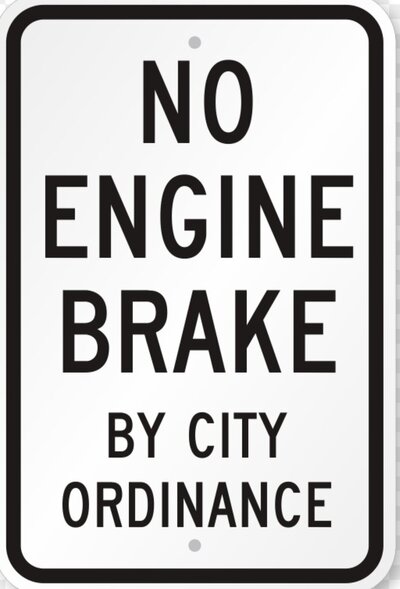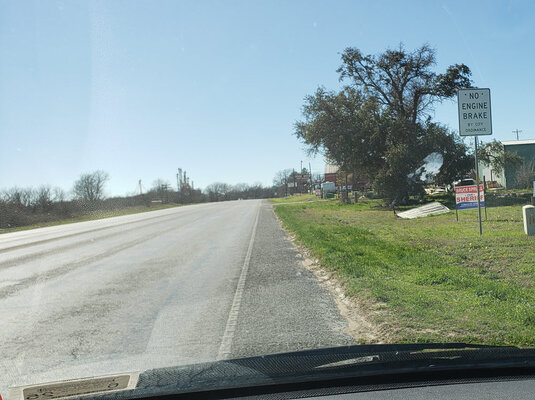The OP may want to skip thru my dissertation and read the bottom paragraph and watch the short video, as I suspect this is the system they have.
No Engine Brake is the best possible term that cities can use for the sign. The object is to eliminate noise, specifically the loud popping noise that Jake/Jacobs (and other brands) of COMPRESSION braking make when they let up on the throttle. Some cities and towns post signs that specifically say
No Jake Brake, and I suppose if you could prove in court that your compression braking system is made by someone other than Jacobs, you would be legal.......
Most smaller diesels, those used in pickups and medium duty trucks, are EXHAUST brakes, and they make very little to no noise.
Any kind of engine braking, be it compression, exhaust (both found on diesels) or simply the engine braking a gasoline engine gives you, will require either you, or the vehicles computer, to downshift the gears of the transmission for optimum effect.
Fords, such as the E350/450 chassis used on most Class C models have very effective gasoline engine braking. When in Tow/Haul, if you start a downgrade, accelerator released, you merely press the brake for a moment and the transmission downshifts. The gasoline engine is trying to suck air thru a virtually closed throttle plate and this creates resistance to the engine rotation. If the speed is still too high, you again tap the brake pedal and again the transmission downshifts, maintaining your speed.
Exhaust brakes work in much the same way on newer diesels. They even use the speed control to know what speed to maintain and will downshift and apply more exhaust braking (usually its about three stages of it) again maintaining your speed. The exhaust brake restricts the flow of exhaust out of the engine (a diesel does not have a throttle plate like a gasoline engine, so the exhaust brake is a similar alternative for a diesel engine.
A diesel does not have any significant natural engine braking, due to the lack of a throttle plate, and, while they have very high compression, it only occurs on every other up stroke of the piston and quickly turns into a power stroke. A compression brake basically turns the diesel engine into an air compressor, with every stroke of the piston generating maximum compression before it is released in the loud/objectional popping you hear from class 8 trucks.
For older diesels, such as my 5.9L Cummins, I installed an aftermarket PacBrake brand system that is a butterfly that closes off the exhaust, when the engines computer determines that the 1) accelerator is fully released, and 2) the engine is at 900 rpm or more -or- when the engine is below 170°F the brake operates right down to idle speed. Cummins made provisions in the computer for operating an exhaust brake, but did not actually manufacture or provide the exhaust brake, leaving that to third parties. It is for me to turn it on, and then select the correct gear to provide the speed I want to hold on the downgrade, usually 5th or possibly 4th (6 speed trans)
This is the kit that I installed
When I find some decent short videos on different types of exhaust brakes that show how they work, I will add them.
An Allison transmission retarder is a totally different animal, built into the transmission, it uses transmission fluid in a chamber on the output shaft, with vanes, to create resistance to rotation. The Allison video explains it pretty well. The retarder is an option on the Allison 3000 series transmissions.
Charles






